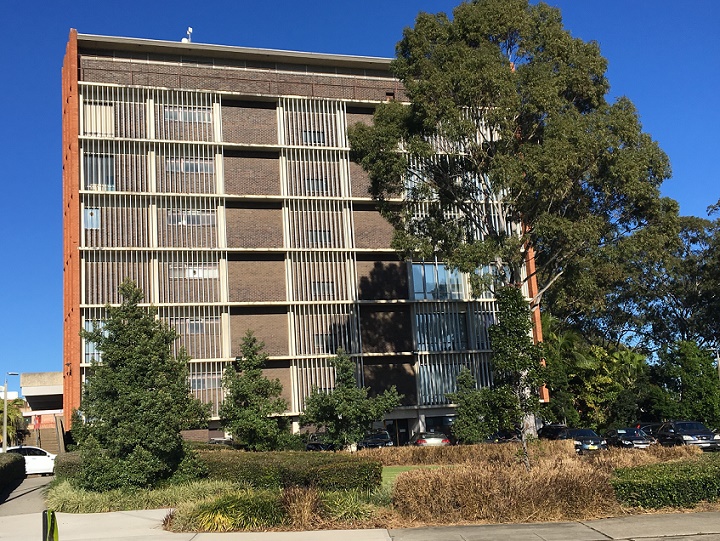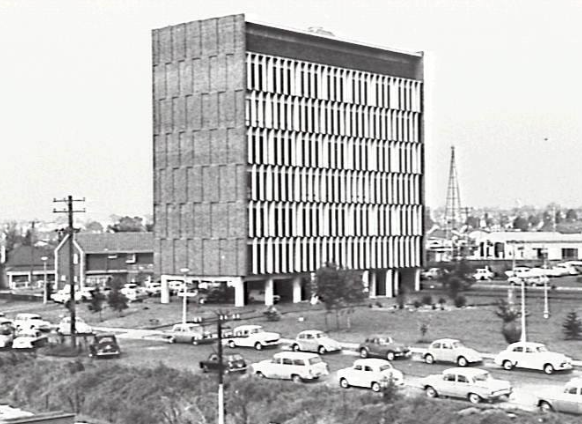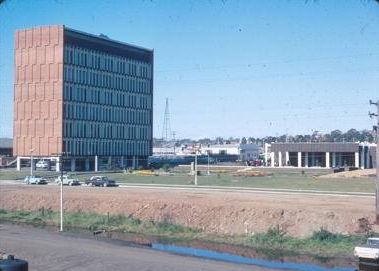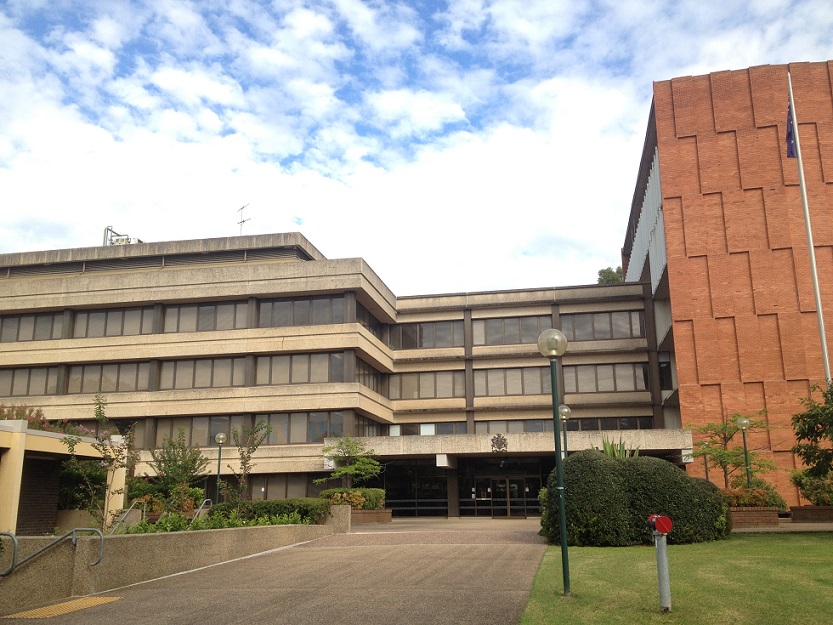
Hope and optimism were behind the construction, 18 years apart, of the two iconic buildings that make up the Campbelltown Council administration headquarters, writes local historian IAN WILLIS:
In 1964, the Campbelltown-Ingleburn News (which local shortened to CI News) ran a banner headline on its front page, Symbol of Progress, over a story about the opening of a new council administration building as part of a proposed civic centre precinct in the town centre.
The newspaper headline was a statement of faith in the confidence of Campbelltown and its planned declaration as a satellite city by the state government.
The eight-storey office building was the tallest structure in the town centre and was visible from all parts of the area.
The top floors provided a bird’s eye view over central Campbelltown and completely dominated its surroundings.
The new administration building was a metaphor for Campbelltown’s growing confidence in the 1960s and the town’s future.
The building symbolised the hopes and dreams of planners and administrators and the immense changes that were to engulf Campbelltown over the following decades.
At the official opening on November 28, 1964 Campbelltown Mayor Thomas Keith Fraser felt that the town was on the verge of something special.
“At the threshold of the most dynamic period in the history of its area, Campbelltown Municipal Council, imbued with a strong sense of purpose and complete confidence in the future, has provided this imposing administrative building,’’ he said.
“The building, the first stage of a civic centre which will cater for the needs of a rapidly expanding community, stands as a practical demonstration of the confidence with which council faces the future convinced that this area, steeped in history, at present of unsurpassed rural charm, will develop, in the near future, into a thriving Satellite City.’’
The administration building was developed under the guidelines of the County of Cumberland scheme.
It was part of an existing Campbelltown civic precinct that included the ambulance station and courthouse, and adjacent to the police station and railway station.
Alderman Greg Percival, the vice-chair of the council civic centre committee, maintained that the building’s design catered for the anticipated administration by the council as a satellite city.

The status of a satellite city was part of the proposed decentralisation by the County of Cumberland with Campbelltown’s projected population to grow to 200,000.
Planning for the new office building had begun in 1961 when the school of arts building provided inadequate space to accommodate council staff.
Initially housed in the old town hall, council staff had moved out into the school of arts after the 1948 amalgamation with Ingleburn Municipal Council.
“The move into the new 1964 building was not without criticism,’’ said Alderman Percival.
He argued that the council’s progression with the project was a “considerable moment’’ for the municipality.
“It was a necessary demonstration of confidence in the municipality by council,’’ he told the CI News on December 1, 1964.
The architects agreed and said that the size, height and position of the building emphasised “the importance and dignity of Local Government function in the affairs of the city’’.
The two storey atrium in the vestibule added greater emphasis to the building’s importance because of its aesthetic features including sculptured central column, cascades and pool.
NSW local government minister and deputy premier Pat Hills officially opened the building on November 28, 1964.
He reassured the council that the state government was about to make Campbelltown a self-contained satellite city.
“Campbelltown is a thriving urban centre set in rural surroundings, but so close to the Sydney metropolis that it largely acts as a dormitory area for a workforce which finds its employment in the metropolitan area,’’ Mr Hills said.
The decision by Campbelltown Municipal Council to build the new office accommodation was based on the direction and security provided by the state government’s County of Cumberland plan.
Unfortunately for the council, the NSW government had abolished the County of Cumberland in December 1963, 12 months before the opening of the new building.

The state government had removed the security of the existing planning framework on which the council had initially been based its decision to proceed with the new building.
Eventually the storm clouds that gathered around the planning processes rained down on the Campbelltown area in the late 1970s and early 1980s, creating much angst for many in the community.
While the contested nature of the planning regime gave many in Campbelltown severe heartburn in the late 1970s and early 1980s, the city was left with an iconic mid-century marvel.
Designed by Sydney architects Davey, Brindley and Vickery in an internationalist style, the office building is a rare intact example of this type of architecture in the local area.
The building retains much of its 1964 integrity with its clean lines and minimalist non-maintenance finish and functional design with the use of concrete, brick, glass and aluminium materials.
Eighteen years later, on September 18, 1982, the Governor of NSW, Sir James Rowland, opened the four storey extensions of the Campbelltown City Council administration centre.
Mayor Guy Thomas stated at the official opening that the city had undergone unprecedented growth and embraced enormous changes since 1964.
The city’s population growth had grown from 24,000 (1963) to 43,000 (1974) and by 1980 was 120,000.
The council’s administration was strained to the limit, and there was a risk of fragmentation of council departments. To avoid this, the architects recommended a new single building to accommodate council staff.
The architects presented three sites for the council’s consideration: the existing civic centre site; Camden Road opposite the Campbelltown Catholic Club; and the Macarthur Regional Growth Centre.

After considering the three options, the council felt that it had a moral obligation to the existing Queen Street commercial precinct to remain at the civic centre site.
The building design inspired Mayor Thomas to draw on the past and old Campbelltown as an inspiration for his address.
“The spirit of the hardy pioneer bred of early settlers is woven into the fabric of our history and community life of today,’’ Mayor Thomas said.
“The City of Campbelltown has an ancient heritage in terms of the nation’s history, and this is being matched by a vital modern record of achievement.
“The wisdom and vision of another progressive Governor of this State, Lachlan Macquarie, almost 160 years ago, formed the nucleus of the closely-knit community which continues to grow in size and stature.’’
NOTE: The above is an edited version of articles first published in Camden History Notes.
